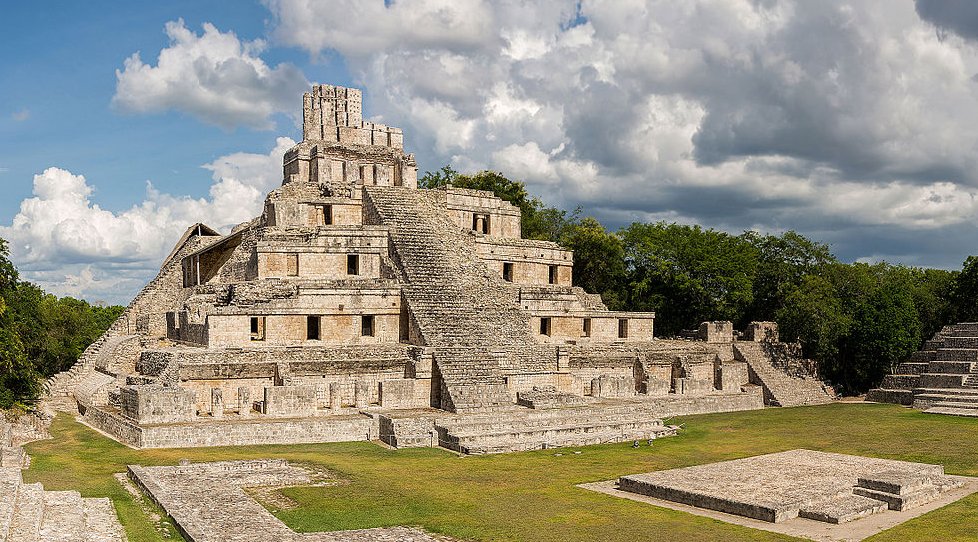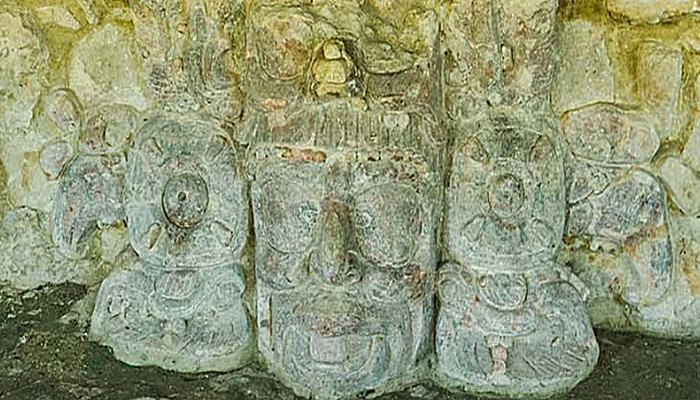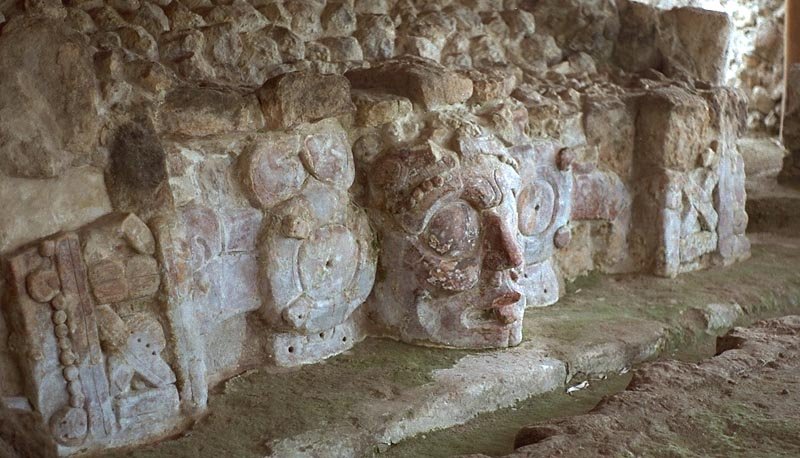Edzna: Ancient Maya City With Sophisticated Underground System Of Canals To Control Unpredictable Floods
A. Sutherland - AncientPages.com - Edzná is an ancient place populated in 400 BC and abandoned c. 1500 AD. It is a Maya archaeological site in the north of the Mexican state of Campeche.
Much of what is known about Edzná and its historical chronology originates from the engravings on the discovered stelae.
The Great Acropolis, with the Building of the Five Floors. IOmage credit: Ralf Roletschek - GFDL 1.2
However, it is not enough to uncover all the secrets of this ancient site; therefore, the decline and eventual abandonment of Edzná remains a mystery.
The place's name comes from an old Mayan-Yucatec word, probably referring to the "Itzáes," an ethnic group of Guatemala associated with the Maya people. So, one can say that in this case, Edzna's name would mean "House of the Itzáes."
There is also another possibility that Edzna means "House of the Echo" since a specific acoustic phenomenon occurs between certain main buildings at the site.
Edzna's name could also mean "House of Gestures" due to the stucco figure that once existed on the crest of the tallest building in the area. Edzna is not only a fascinating site because of its long history.
Temple of the Masks at Edzna. source
Although the site was discovered in 1907, the first excavations started a half-century later and revealed remarkable technological developments of the Maya people. To fight troublesome floods in Edzna, the Maya devised an ingenious plan to keep high humidity almost all year round, not only during the rainy season.
They developed an advanced hydraulic system with a network of canals that drained the valley. The water was directed to a lagoon and transformed into a dam. Other channels served to irrigate the fields, so cultivation flourished, and at the same time, the channels provided plenty of fish.
In the Late Classic period, Edzná was part of the Calakmul society, and Calakmul means "City of the Two Adjacent Pyramids."
It was one of the three largest and most significant Mayan city-states, next to Guatemala's Tikal and Palenque.
Temple of the Masks. Coe, Andrew, "Archaeological Mexico", p. 303. source
At the time, Calakmul was ruled by the dynasty of the Serpents, and these rulers identified themselves as Divine Lords of the Snake ("k'uhul kaanal ajaw").
The most famous structure in Edzná - and perhaps its most outstanding - is the Five-Story Temple, measuring 31.5 meters in height, painted bright red in antiquity, and surrounded by other prominent temples and ceremonial platforms up the city's magnificent acropolis.
On the outside of this Acropolis, the entire area is enclosed by a large 135-meter elongated platform that spans the site's core. The structure shows evidence of several large rooms used for administrative purposes, while the surrounding area served as the central marketplace.
The ancient Maya places had famous ballcourts or Pok ta Pok, and so had Edzna. The southern temple of Edzna is also an interesting structure. It is an excellent example of Teotihuacan-inspired architecture with adornments, including stucco figures and masks representing solar and rain deities.
Panorama of Central Plaza with Acropolis - Edzna Archaeological Site - Campeche State - Mexico - 03.Image credit: Adam Jones, Ph.D. - CC BY-SA 3.0
The Temple of the Masks features stucco depictions of the Maya Kinich Ahau, the solar deity Kinich Ahau. The faces have human features and attributes associated with the ruling elites, such as squint eyes, nose rings and earmuffs, mutilated teeth, and zoomorphic headdresses.
This temple – located to the west of the Small Acrópolis - was discovered in 1988, At the base of this structure, excavations revealed two magnificent stucco masks. One depicts the young Sun God at sunrise, and the other, the old Sun God at sunset.
At Lamanai, Belize, there is also the Temple of the Masks, an impressive structure adorned by 13-foot masks of an ancient Maya King, considered either an Olmec God or Kinich Ahau Maya Sun God) with a headdress of a crocodile.
Unfortunately, once typical for most Edzna structures, these masks did not survive.
Written by – A. Sutherland - AncientPages.com Senior Staff Writer
Updated on January 4, 2024
Copyright © AncientPages.com All rights reserved. This material may not be published, broadcast, rewritten or redistributed in whole or part without the express written permission of AncientPages.com
More From Ancient Pages
-
 Ancient Roman Sandal With Nails And Game Pieces Found Under A Playground In Germany
Archaeology | Nov 22, 2024
Ancient Roman Sandal With Nails And Game Pieces Found Under A Playground In Germany
Archaeology | Nov 22, 2024 -
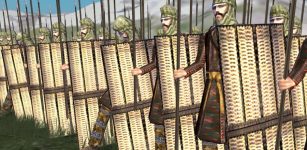 Who Were Persian ‘Sparabara’?
Featured Stories | Aug 28, 2017
Who Were Persian ‘Sparabara’?
Featured Stories | Aug 28, 2017 -
 Birka Artifacts Shed Light On Vikings’ Daily Life
Artifacts | Jun 24, 2019
Birka Artifacts Shed Light On Vikings’ Daily Life
Artifacts | Jun 24, 2019 -
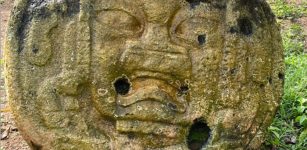 Two Huge Olmec Reliefs Recovered After Anonymous Tip
Archaeology | Aug 9, 2022
Two Huge Olmec Reliefs Recovered After Anonymous Tip
Archaeology | Aug 9, 2022 -
 How Ancient Scientists Calculated The Circumference Of The Earth
Ancient History Facts | May 1, 2017
How Ancient Scientists Calculated The Circumference Of The Earth
Ancient History Facts | May 1, 2017 -
 On This Day In History: Battle Of Pinkie Was Fought – On September 10, 1547
News | Sep 10, 2016
On This Day In History: Battle Of Pinkie Was Fought – On September 10, 1547
News | Sep 10, 2016 -
 Bizarre Ancient Capuchin Crypt ‘Decorated’ With The Bones Of 4,000 Monks
Ancient Traditions And Customs | Nov 22, 2018
Bizarre Ancient Capuchin Crypt ‘Decorated’ With The Bones Of 4,000 Monks
Ancient Traditions And Customs | Nov 22, 2018 -
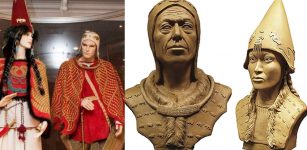 Stunning Facial Reconstruction Of ‘Siberian Tutankhamun’ And His ‘Queen’ Who Died 2,600 Years Ago
Archaeology | Jan 12, 2021
Stunning Facial Reconstruction Of ‘Siberian Tutankhamun’ And His ‘Queen’ Who Died 2,600 Years Ago
Archaeology | Jan 12, 2021 -
 Beads Show European Trade In African Interior Used Indigenous Routes
Archaeology | Sep 17, 2022
Beads Show European Trade In African Interior Used Indigenous Routes
Archaeology | Sep 17, 2022 -
 DNA Study Reveals How Europe’s Hunter-Gatherers Adapted To A New Way Of Life – Farming
Archaeology | Nov 24, 2015
DNA Study Reveals How Europe’s Hunter-Gatherers Adapted To A New Way Of Life – Farming
Archaeology | Nov 24, 2015 -
 Magnificent Pagodas In Indein Village And Undiscovered Secrets In The Myanmar Jungle
Featured Stories | Oct 9, 2020
Magnificent Pagodas In Indein Village And Undiscovered Secrets In The Myanmar Jungle
Featured Stories | Oct 9, 2020 -
 Chester Stash Could Have Been Savings Hidden In An Iron-Glazed Mug
Archaeology | Oct 13, 2015
Chester Stash Could Have Been Savings Hidden In An Iron-Glazed Mug
Archaeology | Oct 13, 2015 -
 Can King Ashurbanipal’s Strange Clay Tablet Unravel The Mystery Of The Lunar Kings
Ancient Mysteries | Nov 9, 2021
Can King Ashurbanipal’s Strange Clay Tablet Unravel The Mystery Of The Lunar Kings
Ancient Mysteries | Nov 9, 2021 -
 Streets Of Ancient Rome Were Very Dangerous
Ancient History Facts | Feb 29, 2016
Streets Of Ancient Rome Were Very Dangerous
Ancient History Facts | Feb 29, 2016 -
 Odd Ancient Dwellings Of The Snake People – American-European Connection Part 1
Ancient Mysteries | Sep 6, 2020
Odd Ancient Dwellings Of The Snake People – American-European Connection Part 1
Ancient Mysteries | Sep 6, 2020 -
 How The Handbook ‘Hammer Of Witches’ And Then-Existing Networks Inspired Europe’s Witch Craze
Social Sciences | Oct 10, 2024
How The Handbook ‘Hammer Of Witches’ And Then-Existing Networks Inspired Europe’s Witch Craze
Social Sciences | Oct 10, 2024 -
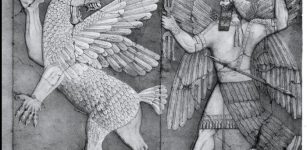 Evil God-Bird Anzu Who Stole The Tablet Of Destiny To Control Universe and Fates Of All
Featured Stories | Aug 8, 2016
Evil God-Bird Anzu Who Stole The Tablet Of Destiny To Control Universe and Fates Of All
Featured Stories | Aug 8, 2016 -
 Rasputin – Controversial Mystic With Healing Powers – An Evil Or Misunderstood Man?
Featured Stories | Aug 4, 2018
Rasputin – Controversial Mystic With Healing Powers – An Evil Or Misunderstood Man?
Featured Stories | Aug 4, 2018 -
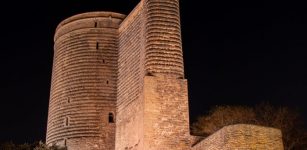 Baku’s Mysterious Maiden Tower – Legend Of The Daughter Of Fire Who Saved The Sacred Temple May Be True
Featured Stories | Jul 5, 2021
Baku’s Mysterious Maiden Tower – Legend Of The Daughter Of Fire Who Saved The Sacred Temple May Be True
Featured Stories | Jul 5, 2021 -
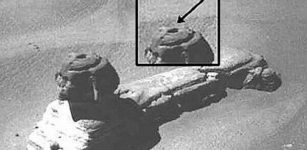 Head Of The Great Sphinx Was Changed – It’s The Gateway To A Secret Underground City– Historians Suggest
Featured Stories | Jan 20, 2018
Head Of The Great Sphinx Was Changed – It’s The Gateway To A Secret Underground City– Historians Suggest
Featured Stories | Jan 20, 2018

